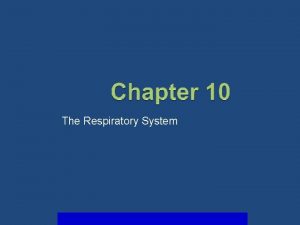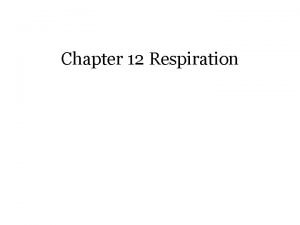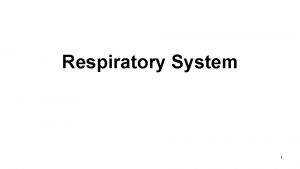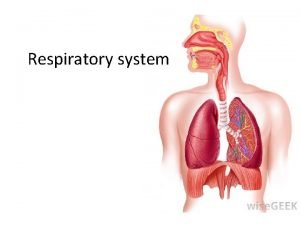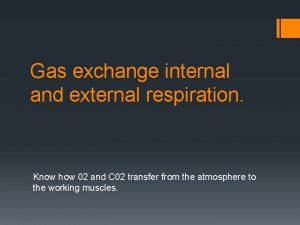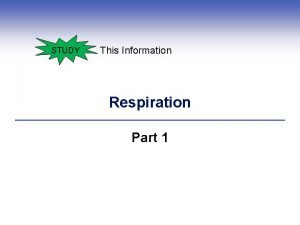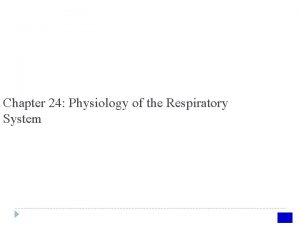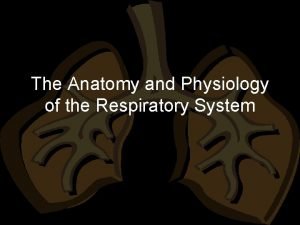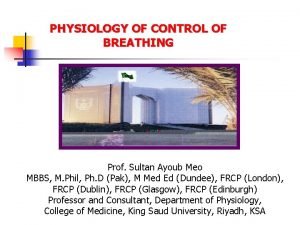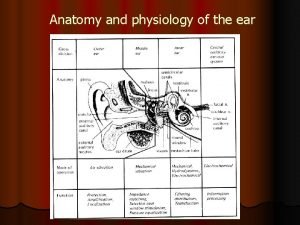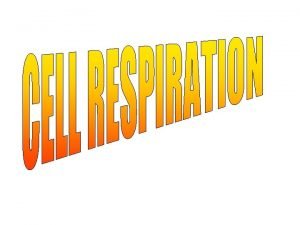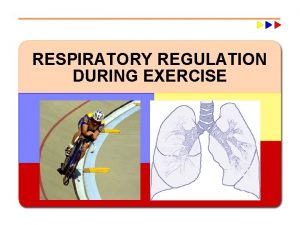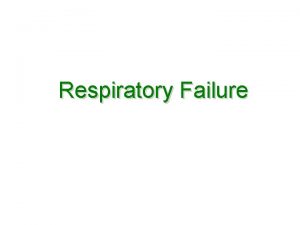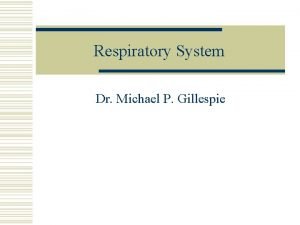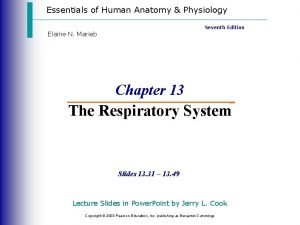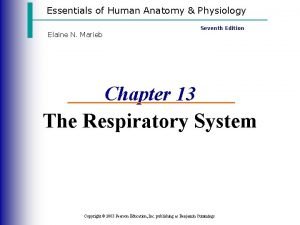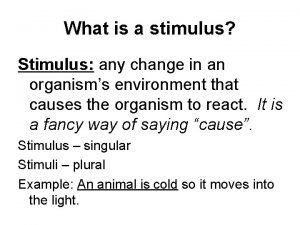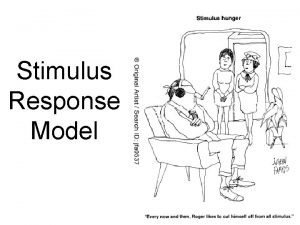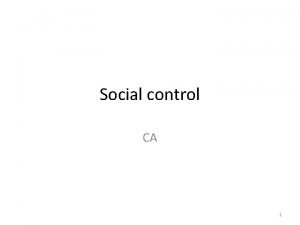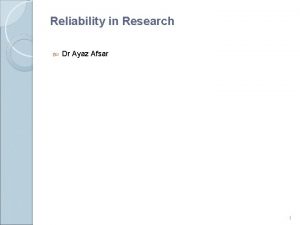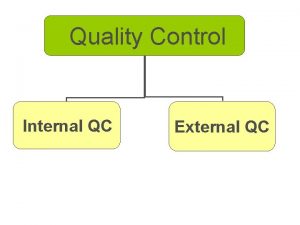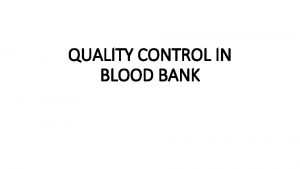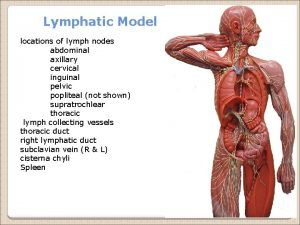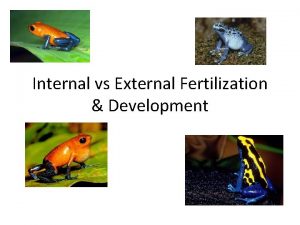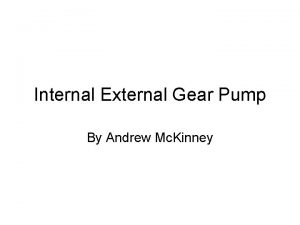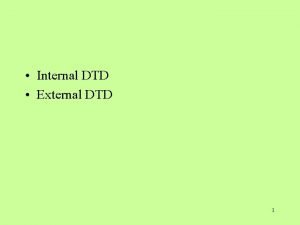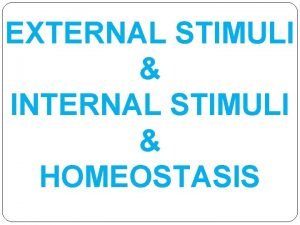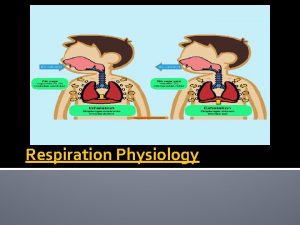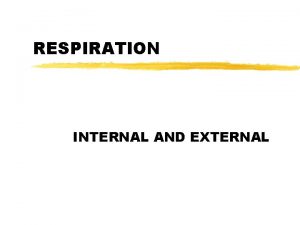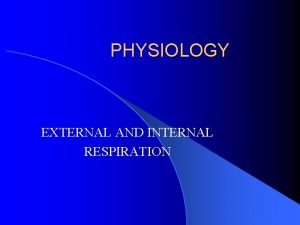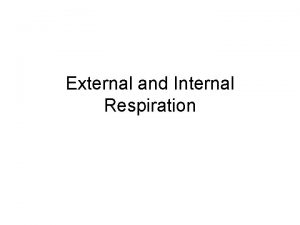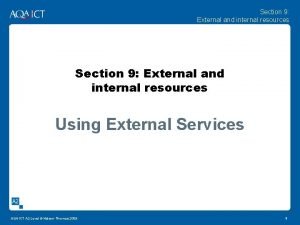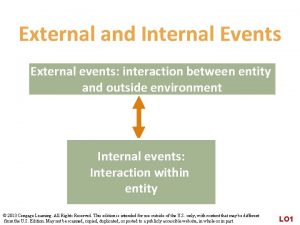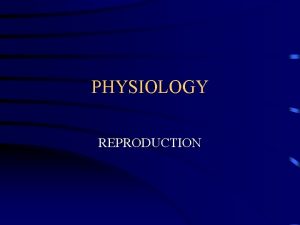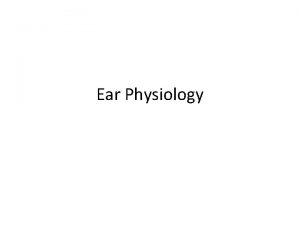PHYSIOLOGY EXTERNAL AND INTERNAL RESPIRATION 2 Respiration l











































- Slides: 43

PHYSIOLOGY EXTERNAL AND INTERNAL RESPIRATION

2

Respiration l Movement of gases between the environment and the body’s cells – The exchange of air between the atmosphere and the lungs l l Known as ventilation or breathing Inspiration and Expiration – The exchanges of O 2 and CO 2 between the lungs and the blood – Transport of O 2 and CO 2 by the blood – The exchange of gases between blood and the cells

4

5

6

Anatomy of the Respiratory System l Nasal Concha – Air eddies Air is cleaned l Warmed l Humidified l l Tonsils and Adenoids – Lymph nodes that filter the air – Located in the nose, back of the throat, below the tongue


Larynx l Contains Vocal Cords – Connective tissue bands that tighten to create sound when air moves past them l Thyroid Cartilage – Sensitive to Testosterone levels


11


13

Trachea l Conducts Air – Lined with pseudostratified ciliated columnar epithelium – Cilia can be paralyzed by cigarette smoke l Surrounded by C-shaped Cartilagenous rings and the trachealis muscle – Esophagus is dorsal to the trachea l Approximately 4 inches long


Conducting System or Respiratory Tree l Primary Bronchi – Surrounded by O-shaped cartilagenous rings – Bifurcates to Secondary Bronchi in the lungs – Respiratory Bronchioles Surrounded by smooth muscles l Diameter of the airways becomes progressively smaller from the trachea to the bronchioles l The total cross-sectional area increases with each division of the airways l


Pleural Membranes l Visceral Pleura – Attached directly to the lungs l Parietal Pleura – Attaches to the visceral pleura – Also attaches to the thoracic cavity l Serous Fluid – Separates the two pleura and lubricates in order to decrease friction – Consistency of egg whites – Pleurisy occurs when the fluid decreases l The Function of the Pleural Membranes is to hold the lungs open


Alveoli l Clustered at the ends of the terminal bronchioles l Makes up the bulk of lung tissue l Primary function is the exchange of gases between themselves and the blood l Surrounded by elastic fibers – Creates Elastic Recoil


22

Capillaries l The alveoli are closely associated with an extensive network of capillaries – Blood vessels cover 80 -90% of the alveolar surface forming a continuous “sheet” of blood in close contact with the air-filled alveoli


Respiratory Membrane l Consists of – The Wall of the Alveoli – The Respiratory Space This is a fluid filled space l Pneumonia may cause the space to fill with more fluid than normal l – This decreases the ability to exchange gases – The Wall of the Capillary


27

28

Gas Laws l At sea level normal atmospheric pressure is 760 mm. Hg – On top of Mt. Everest Patm = 153 mm. Hg

Dalton’s Law l The total pressure exerted by a mixture of gases is the sum of the pressures exerted by the individual gases – 78% N 2 – 21% O 2 – 1% CO 2 l Partial Pressure of gases – The pressure of a single gas in a mixture

Gas Law The total pressure of a mixture of gases, is the sum of the pressures of the individual gases (Dalton’s Law) l Gases, singly or in a mixture, move from areas of higher pressure to areas of lower pressure l If the volume of a container of gas changes, the pressure of the gas will change in an inverse manner (Boyle’s Law) l

Dalton’s Law l To find the partial pressure of any one gas in a sample of air, multiply the atmospheric Pressure (Patm) by the gas’s relative contribution (%) to Patm. – Partial pressure of an atmospheric gas = l Patm X % of gas in atmosphere – Partial pressure of oxygen = 760 mm. Hg X 21% l PO 2 = 760 X 0. 21 = 160 mm. Hg

Gases Move from High Pressure to Low Pressure l Air flow occurs whenever there is a pressure gradient

Alveoli Composed of a single layer of epithelium called Type I cells l Type II alveolar cells l – Secretes surfactant – Surfactant decreases the surface tension of the water within the alveoli – Coats the inside of the alveoli – Cortisol causes the maturation of the type II cells in the fetal stage of development l Dust Cells – Phagocytes


36

37

Emphysema l Loss of elastic fibers for elastic recoil during expiration – Elastin is destroyed by elastase l An enzyme released by immune cells l Have more difficulty exhaling than inhaling

Chronic Obstructive Pulmonary Disease (COPD) l Asthma, emphysema, chronic bronchitis


Pressure Gradients l Arterial Pressures – PO 2 = 100 mm. Hg – PCO 2 = 40 mm. Hg l Alveolar Pressures – PO 2 = 100 mm. Hg – PCO 2 = 40 mm. Hg l Venous Pressures – PO 2 = 40 mm. Hg – PCO 2 = 45 mm. Hg l Tissue Pressures – PO 2 = 40 mm. Hg – PCO 2 = 45 mm. Hg

Hemoglobin l Oxygen is transported two – Dissolved in the plasma – Bound to hemoglobin ways in the blood l Mean Corpuscular Hemoglobin – Counting the RBC’s and quantifying the amount of hemoglobin per RBC l Hemoglobin Concentration or %

Hemoglobin l One hemoglobin molecule binds up to four oxygen molecules – Percent oxygen saturation l Globin – Proteins in the hemoglobin Alpha, beta, gamma and delta types l Adults have 2 alpha and 2 bets l Fetal Hb l – Two gamma and two alpha
 External respiration vs internal respiration
External respiration vs internal respiration Intrapleural pressure
Intrapleural pressure Respiratory system learning objectives
Respiratory system learning objectives Labled
Labled Mc respiration
Mc respiration How are internal and external respiration alike
How are internal and external respiration alike External vs internal respiration
External vs internal respiration Internal vs external respiration
Internal vs external respiration Pulmonary capillary
Pulmonary capillary What is the physiology of respiration
What is the physiology of respiration Pulmonary gas exchange and transport diagram
Pulmonary gas exchange and transport diagram Upper respiratory tract labeled
Upper respiratory tract labeled Physiology of respiration
Physiology of respiration Physiology of respiration
Physiology of respiration Physiology of external ear
Physiology of external ear Accounting information system chapter 1
Accounting information system chapter 1 Cellular respiration
Cellular respiration External respiration
External respiration External respiration
External respiration Gas exchange
Gas exchange External respiration steps
External respiration steps External respiration
External respiration External respiration
External respiration Any change in the environment
Any change in the environment External and internal users of accounting
External and internal users of accounting Internal and external stakeholders examples
Internal and external stakeholders examples Stimulus response model
Stimulus response model Types of social control
Types of social control Internal and external factors of nationalism
Internal and external factors of nationalism Reliability test in research
Reliability test in research External and internal quality control
External and internal quality control Types of internal quality control
Types of internal quality control Stakeholders internal and external
Stakeholders internal and external Transversus abdominis
Transversus abdominis Objective of quality
Objective of quality Interrupt programming in 8051 using assembly language
Interrupt programming in 8051 using assembly language Internal vs external fertilization
Internal vs external fertilization External hardware components
External hardware components Internal vs external gear pump
Internal vs external gear pump External dtd
External dtd What is external conflict
What is external conflict Sternocostalis muscle origin and insertion
Sternocostalis muscle origin and insertion Types of finish line
Types of finish line Internal and external stimulus
Internal and external stimulus


